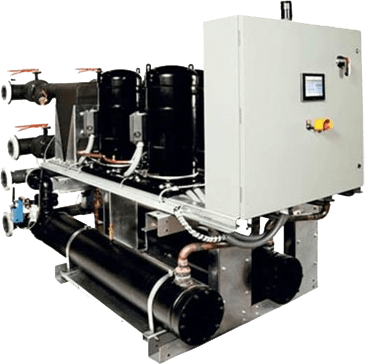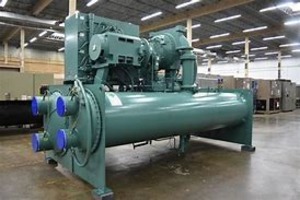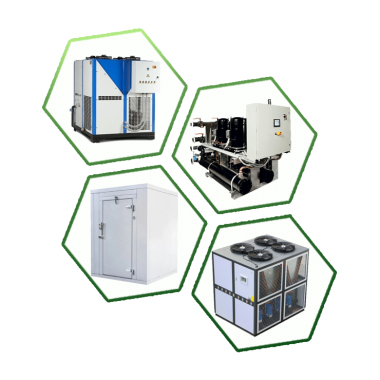Water Cooled chillers – Components
Water-cooled chillers are more efficient. Due to the fact that they condense based on the ambient temperature and bulb temperature. which is lower than the temperature of an ambient dry bulb. Water-cooled chiller is more effective the lower it condenses.
COMPRESSOR
The compressor serves as the system’s power supply and is the heart of the entire air conditioning system. It supplies all of the air conditioning’s power. The compressor of an air conditioner represents a physical transition from a low-potential to a high-potential location. To convert the low-temperature gas that the compressor has compressed into a high-temperature gas is its intended use. Last but not least, the gas in the heat exchanger and other heat-exchange media.
CONDENSER
To cool the high-temperature, high-pressure refrigerant superheated vapor discharged from the compressor into liquid or gas-liquid mixture. The cooling medium removes the heat that the refrigerant in the condenser transmits (water or air). Water is used as the cooling medium in condensers that utilize it, and when the water’s temperature rises, condensation’s heat is dissipated. Although a cooling tower or cooling pool is necessary for the system, the cooling water is typically recycled.
EVAPORATOR
The function of the evaporator is to use the liquid low-temperature refrigerant to evaporate easily under low pressure. Transform into vapor and take up the heat of the cooling medium. in order to fulfill the refrigeration’s purpose.
generally, tank-type (immersion type) evaporators are used in water-cooled chillers. The refrigerant evaporates inside the tube, submerging the entire group of evaporator tubes in the refrigerant-filled chamber. Only open circulation systems may use this evaporator. Therefore non-volatile materials like saltwater and water are the only acceptable refrigerants. If the brine is utilized, it is simple for the evaporator tube to oxidize and for the brine to collect moisture, lowering the concentration. The refrigerant carrier’s flow can be seen in real time via this evaporator.
THERMAL EXPANSION VALVE
By sensing the gaseous refrigerant’s superheat at the evaporator’s outlet, it regulates the flow of refrigerant into the device. Thermal expansion valves are classified as either external or internal balancing types based on various balancing techniques.






Learn about water-cooled chiller systems - Cool Fab Equipments March 21, 2024 at 11:23 pm
[…] Water-cooled chiller systems and waterside economizers are components of HVAC (Heating, Ventilation, and Air Conditioning) systems utilized in commercial and industrial buildings to provide proficient cooling. Here’s an overview of each: […]